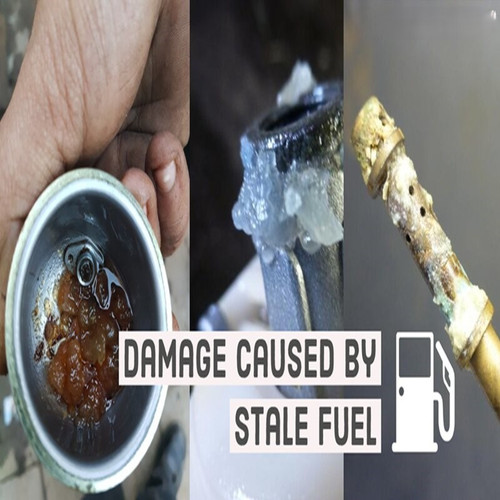Oxygenated Gas vs. Non-Oxygenated Gas: Which is Right for Your Powersports Vehicle?
When fueling up your powersports vehicle, the choice between oxygenated and non-oxygenated gas can seem confusing. Understanding the differences and benefits of each type of fuel will help you make the best decision for your engine's performance and longevity.
What is Oxygenated Gas?
Oxygenated gas contains additional compounds, such as ethanol, that increase the oxygen content in the fuel. This type of gas is designed to burn cleaner, reducing harmful emissions and improving air quality. It’s commonly found in most gas stations and often contains ethanol levels of up to 10% (E10) or higher.
Pros:
- Reduces environmental impact by lowering carbon monoxide emissions.
- Widely available and often less expensive than non-oxygenated options.
Cons:
- Ethanol absorbs moisture, which can lead to corrosion or damage in engines that aren't used frequently.
- Carbureted vehicles can plug up after 30 days of non-use and cost you hundreds of dollars in a carburetor rebuild service.
- May result in reduced fuel efficiency and performance for some small engines.
What is Non-Oxygenated Gas?
Non-oxygenated gas, often referred to as ethanol-free fuel, lacks additives like ethanol. It’s commonly used in older engines, small engines, and recreational vehicles, including powersports vehicles that may be sensitive to ethanol's effects.
Pros:
- Ideal for infrequently used engines or seasonal vehicles, as it minimizes moisture absorption and corrosion risks.
- Provides optimal performance and fuel efficiency for certain engines.
- Can be stored much longer then oxygenated gas.
Cons:
- Less environmentally friendly due to higher emissions.
- Limited availability and often more expensive than oxygenated gas.
Which One is Right for Your Powersports Vehicle?
Choosing between oxygenated and non-oxygenated gas depends on your specific vehicle and usage. If your powersports vehicle is designed to handle ethanol-blended fuels and you’re looking for a cost-effective, eco-friendly option, oxygenated gas may work well. However, if your vehicle has a carbureted engine or is used infrequently, non-oxygenated gas might be the better choice to ensure long-term reliability and performance. Follow your service manual or owners manual recommendations.
Expert Advice You Can Trust
At Rebuilt PowerSports, we understand the unique fuel requirements of powersports vehicles. Whether you need advice on fuel selection or assistance with engine maintenance, our experienced team is here to help. Contact us today for personalized recommendations to keep your engine running smoothly.

